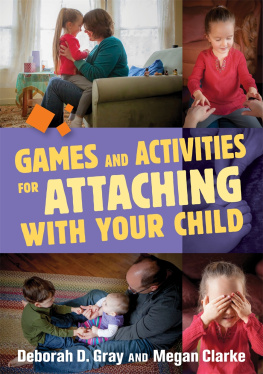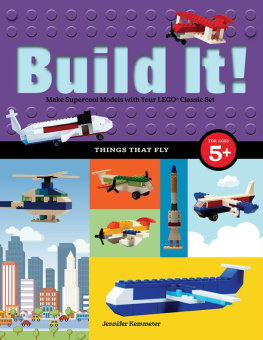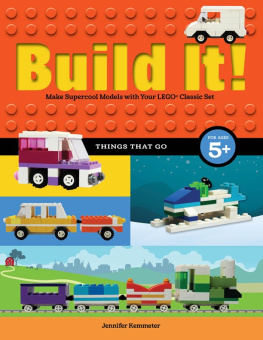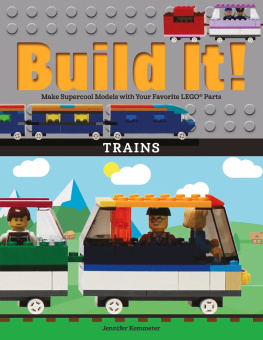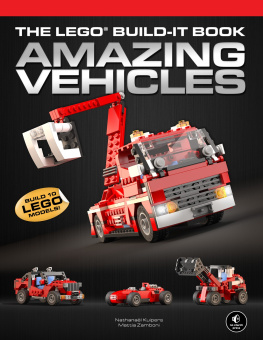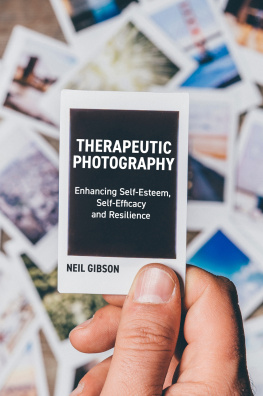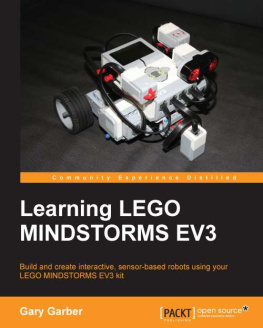
Thera-Build
with LEGO
A Playful Therapeutic Approach
for Promoting Emotional
Well-Being in Children
Alyson Thomsen

Jessica Kingsley Publishers
London and Philadelphia
Contents
Preface
Thera-Build is my brainchild, Alyson Thomsen, a former senior teacher and LEGO Education Certified Trainer in the UK. I hope that you find it useful.
Our family was relocated to Denmark in 2008, then on to Colorado, USA in 2010, following my husbands employment with LEGO Systems, which is when my relationship with bricks began.
Upon our return to the UK in 2012, I was keen to head back to the classroom part-time, using LEGO to boost academic performance. Whole-class literacy and science, technology, engineering and mathematics (STEM) activities were particularly popular; however, as the months went by, I increasingly spent time working with small groups of targeted children, for whom academic challenges were just one area of concern.
I realised that in order for the children in my focus groups to reach their academic potential, they needed more social and emotional support; so, I set about reading, researching and training in this area. Bringing a more therapeutic approach into the classroom and combining it with LEGO building activities seemed to be delivering positive outcomes, in terms of well-being, behaviour and greater academic success.
In 2015 the concept of Thera-Build was conceived, and I set about trialling and developing my ideas. By 2016 it was established as a successful intervention, based on empirical evidence from the schools, charities and trusts that had commissioned projects, and Thera-Build became the main focus of my work.
I continue to work as a Thera-Build practitioner, offering one-to-one and group sessions with children and young people. I also provide training courses for parents, carers and professionals. This book seemed to be the next logical step. For more information on Thera-Build training, please visit www.bricks2learn.com/thera-build/training.
Chapter 1
Thera-Build
INTRODUCTION AND FUNDAMENTALS
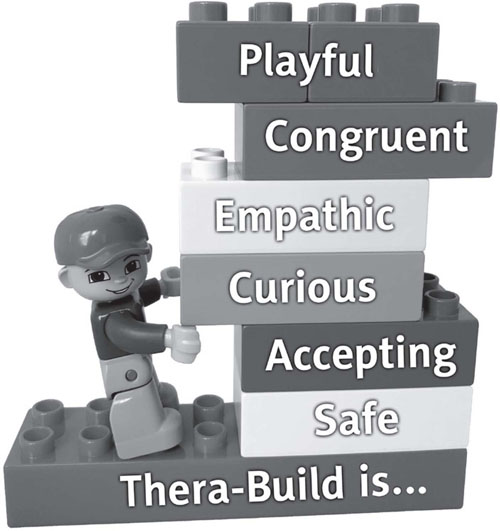
Introduction
Thera-Build is a therapeutic programme for building confidence and self-esteem using LEGO. It is based on playful, active interaction with children and young people, to improve social skills, build resilience and promote good mental health.
If a child does not enjoy using LEGO as a medium, it should not be forced upon them. LEGO is first and foremost a toy, and must be preserved as such.
A playful facilitator who finds joy in building with LEGO is best placed for implementing Thera-Build.
What should I expect from this book?
This practical resource offers a complete insight into the Thera-Build programme. It contains:
the theory behind the methodology
helpful strategies for developing sessions
effective ways of organising, monitoring and assessing sessions
tried and tested LEGO activities
LEGO building tips and ideas
real-life case stories
practical advice on resourcing, storage and cleaning.
What sort of difficulties can be addressed through a Thera-Build approach?
Referrals to the Thera-Build programme fall into two main, interconnected categories:
A child is displaying behaviours that are causing concern:
i. angry and aggressive outbursts
ii. bullying or being bullied
iii. quiet and withdrawn
iv. raised anxiety levels
v. signs of self-harm.
A specific incident has occurred in a childs life that may require a therapeutic response:
i. domestic violence
ii. separation/divorce/imprisonment/abandonment
iii. long-term/terminal illness
iv. substance abuse
v. death of a family member/grief.
If a childs needs are too complex for a Thera-Build intervention, they should be referred on to a clinical consultant for expert advice, assessment and therapy.
Is Thera-Build realistic in an educational setting?
I am often asked whether a therapeutic approach is appropriate in a school environment. More specifically about how issues of discipline, boundaries and control will be addressed, when the children are clearly having a lovely time playing with LEGO, and not apparently learning anything of any educational value.
As a former senior teacher, I do understand the pressures schools face in terms of inspections, exam results, league tables and dwindling budgets; demands that make it difficult to justify a playful intervention in which children are not directly involved in academic activity. I also accept the argument that teachers are not social workers or therapists. However, many teachers and support workers are already dealing daily with children whose knee-jerk response to new challenges is to lash out verbally or physically, or to go into defiant withdrawal.
Children who have experienced early childhood trauma are highly unlikely to be brought to reason by a verbal reprimand, the threat of a more senior staff member being sent for, a call home to a parent, or even exclusion when in a mental state of hyper or hypo arousal. Aggressive outbursts or refusal to comply usually result in punishment of one kind or another, which may temporarily put a stop to the behaviours. However, they are certain to be repeated when a child is triggered, because the underlying alarm system is still on, scanning for danger, and prepared to re-activate at the slightest provocation. We need to work with children to get this internal system under control, so that a child is able to access the curriculum, engage with the teaching staff and reach their full potential.
I am frequently told that a child can behave when they want to and therefore if they do not respond at a particular moment in time to what is expected of them, or adhere to what is considered appropriate or acceptable right there and then, they are just being naughty. This is a challenge, but it is part and parcel of the fallout of childhood trauma, and labelling the child as a problem will in all probability exacerbate the behaviour, as the child assumes the role that they have been allocated.
With disapproving judgements, low expectations and a sense of not belonging, there is absolutely no incentive, indeed little point, in trying to change the tide of public opinion against them. Children in this situation may well give up trying, withdraw and refuse to engage, or become more defiant and aggressive in line with expectations. For children who have been the victims of complex trauma, this creates yet another level of complication.
It is well understood that pupils cannot learn effectively without good mental health. Maybe, just maybe, there is an alternative approach which recognises that school can offer a place of safety for children who have experienced, or are still living with, traumatic stress. A space in which they can make sense of what has happened/is happening in their chaotic lives, and that offers them a lifeline, a way of being meaningfully connected, so that they can begin to build healthy relationships where they are supported to access the education that is being offered to them.
Thera-Build fundamentals
Thera-Build is an adult-led but child-centred programme that is completely responsive to the individual needs of each child.
Practitioners facilitate the building process by giving the child the tools for successful construction, for example how to follow a build-guide, use a brick separator, understand LEGO measurements and technical vocabulary. They also guide children through the building process, offering help and support where appropriate, but not controlling the finished outcome.
Next page

